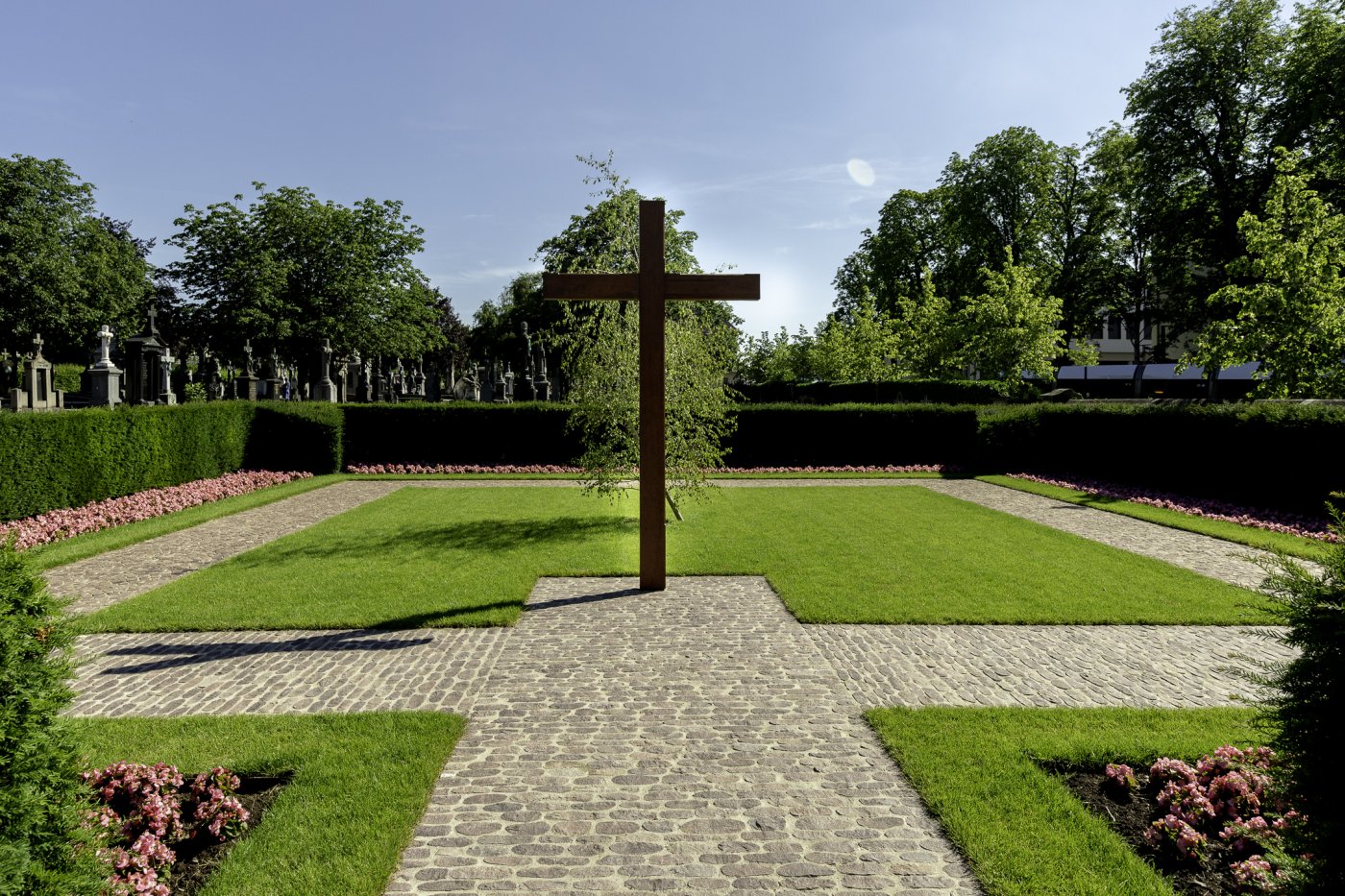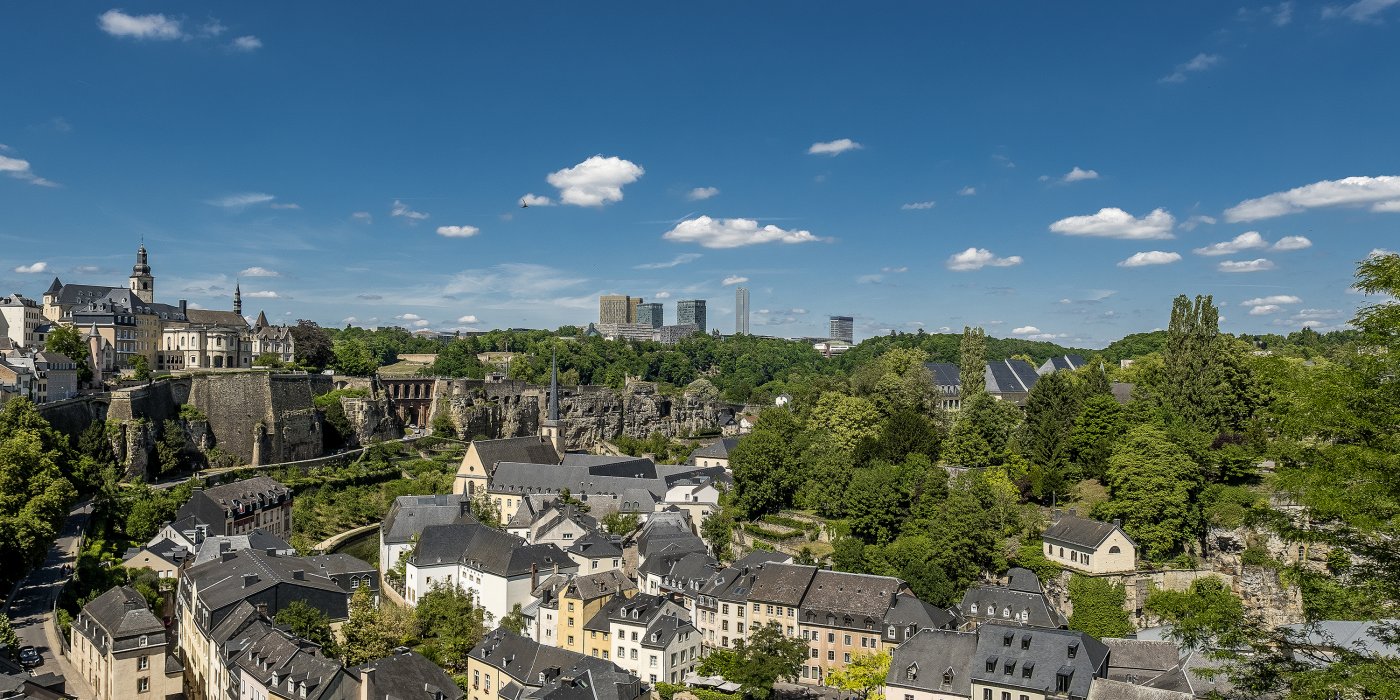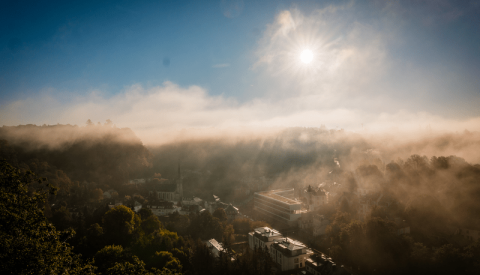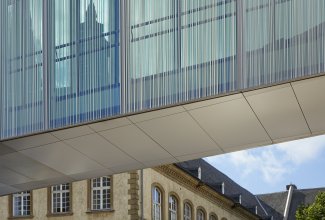Description
The "Hinzerter Kräiz", a pre-eminent national memorial, is the site of an annual gathering, held around 25 February, of the Luxembourg League of Political Prisoners and Deportees (LPPD), which organises a memorial ceremony next to the National Memorial for Resistance Fighters and the Deported.
The Hinzert Cross was made of beams that came from the SS-Sonderlager Hinzert (Hunsrück) – the Hinzert concentration camp – by Joseph Colabianchi, a carpenter who was a political prisoner in this camp. It was erected in late 1945 on the site where Luxembourgers were interred.
The origins of the Hinzert Cross monument in Notre-Dame Cemetery date back to the funerals held there on 9 and 10 March 1946. Every year since then, an official gathering has been held at the monument on the National Day of Remembrance. In 1946, the Luxembourg government successfully repatriated the exhumed bodies of 78 Luxembourg resistance fighters who died in the bombardments in Wiesbaden or were killed at the Hinzert camp, executed in the Klingelpütz prison in Cologne, or shot to death in the Preungesheim prison in Frankfurt.
In the late 1960s, the site was converted and enlarged with the creation of a forecourt. It was inaugurated on 10 May 1969, and given the name "Monument de la déportation" (memorial for the deported). In 1974, the government decided to add the title "national" to the name. At the instigation of the National Council of the Resistance, the monument was given the name it has to this day: "Monument national de la Résistance et de la déportation" (National Memorial for Resistance Fighters and the Deported).
The site has since been enlarged and redeveloped, with the addition of a bronze statue known as "The Political Prisoner". The statue was made by Lucien Wercollier (1908–2002), an artist and art education teacher who was himself a resistance fighter, a former political prisoner at Hinzert and a prisoner in the camps in Lublin and Silesia. In 1986, Wercollier designed a monument – "In ardorem humanitatis, pacis et iustitiae" – for the location of the Hinzert camp memorial to pay tribute to the people from France, the Netherlands, Belgium, Luxembourg and Germany who perished in the camp.
The National Memorial for Resistance Fighters and the Deported symbolises the suffering endured by the people who opposed the policies of the Nazi occupiers from 1940 to 1945. It is a gathering place where survivors and political leaders gather as a reminder that we must never stop defending the right to independence and the fundamental freedoms.
The act of remembrance that takes place at the Hinzert Cross is just one event on the official schedule of the National Day of Remembrance. In addition to this gathering, HRH the Grand Duke lays a wreath at the National Monument of Luxembourg Solidarity ("Kanounenhiwwel"), and flowers are laid at the monument in memory of the victims of the Holocaust in Boulevard Roosevelt and at the Monument of Remembrance in Place de la Constitution. At Notre-Dame Cemetery, a representative from the Catholic Church, the Chief Rabbi of Luxembourg and the pastor of the Protestant Church of Luxembourg bless the grave at the National Memorial for Resistance Fighters and the Deported. The chair of the Chamber of Deputies, the prime minister, and the chief alderman of the City of Luxembourg, with officials and ambassadors in attendance, then lay wreaths at the monument.










